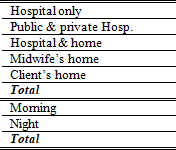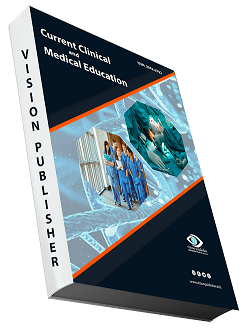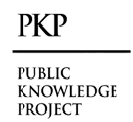Effect of an Educational Program on Knowledge and Perceived Barriers Toward Kangaroo Care among Nurses and Midwives in Kirkuk Hospitals
Keywords:
Educational program, Kangaroo care, Nurses and Midwives, BarriersAbstract
Background: Kangaroo Care(KC) is one of the most critical actions that a mother can take to care for her infant after giving birth. This is beneficial for a variety of purposes, such as nursing, vital stability, temperature regulation, and bonding. The advantages of SSC are not being fully realized as a result of numerous obstacles, including the premature separation of infants, a lack of appropriate provider training, and a lack of adequate institutional support, particularly in settings with limited resources.
Aim: To find out how KC is beneficial, what obstacles standing in the way and how well an educational intervention in Kirkuk City hospitals improved the understanding of nurses and midwives.
Methods: A quasi-experimental study applying a pre-test/post-test methodology was conducted. A specific sample of Sixty nurse-midwives was chosen for participation. Volunteers performed a knowledge evaluation before to the intervention, followed an educational session on KC, and subsequently performed a post-intervention assessment to evaluate knowledge improvements.
Results: The significance of skin-to-skin contact between the pretest and posttest. In the pretest, the mean knowledge score was 0.26, classified as inadequate, with inaccurate answers prevailing across the majority of items. The posttest findings indicate a significant enhancement, with the total average score rising to 0.91, classified as good. Over 83% of participants across all items provided correct responses following the intervention.
Conclusion: The study indicates that structured educational initiatives promote nurses' competene in KC interpretation.
Downloads
References
Abd Elhakm, E. M., & Elbana, H. M. (2018). Effect of simulation based training on maternity nurses’ performance and self-confidence regarding primary postpartum hemorrhage management. American Journal of Nursing, 6(6), 388-397.
Abdulghani, N., Edvardsson, K., & Amir, L. H. (2020). Health care providers’ perception of facilitators and barriers for the practice of skin-to-skin contact in Saudi Arabia: A qualitative study. Midwifery, 81, 102577.
Abdulrahman, N. B., Ahmed, S. B., Kareem, N. T., & Abdullah, S. M. (2024). Knowledge and Practice of Nurses and Midwives Regarding Immediate Care after Birth at Two Tertiary Centers in the Kurdistan Region. Erbil Journal of Nursing and Midwifery, 7(1), 80-91.
Adeli, M., & Azmoudeh, E. (2016). Influential factors of mother-infant skin-to-skin contact based on the precede-proceed model from the perspective of midwives in Torbat Heydariyeh hospitals.
Ali, N. B., Priyanka, S. S., Bhui, B. R., Herrera, S., Azad, M. R., Karim, A., Shams, Z., Rahman, M., Rokonuzzaman, S., & Meena, U. S. J. (2021). Prevalence and factors associated with skin-to-skin contact (SSC) practice: findings from a population-based cross-sectional survey in 10 selected districts of Bangladesh. BMC pregnancy and childbirth, 21, 1-13.
Ali, S. H., & Ghafel, H. H. (2022). Nurse-Midwives' Knowledge and Practices About Immediate Newborn Care. International journal of health sciences, 6(S1), 8915-8940.
Almutairi, W. M. (2022). Survey of skin-to-skin contact with obstetrics and pediatric nurses. Nursing Reports, 12(1), 13-21.
Amiri, R., & Heydari, A. (2017). Nurses' experiences of caring for patients with different cultures in Mashhad, Iran. Iranian journal of nursing and midwifery research, 22(3), 232-236.
Bejiqi, R., Retkoceri, R., Bejiqi, H., Zeka, N., Gerguri, A., Retkoceri, A., Vuçiterna, A., Berisha, M., & Maloku, A. IMPACT OF PRENATAL DIAGNOSIS AND OUTCOMES OF NEONATES AND FETUSES WITH COMPLETE AV-BLOCK SINGLE CENTRE EXPERIENCE IN A COUNTRY WITH LIMITED REOSURCES.
Boundy, E. O., Dastjerdi, R., Spiegelman, D., Fawzi, W. W., Missmer, S. A., Lieberman, E., Kajeepeta, S., Wall, S., & Chan, G. J. (2016). Kangaroo mother care and neonatal outcomes: a meta-analysis. Pediatrics, 137(1).
Cañadas, D. C., Perales, A. B., Belmonte, M. d. P. C., Martínez, R. G., & Carreño, T. P. (2022). Kangaroo mother care and skin-to-skin care in preterm infants in the neonatal intensive care unit: A bibliometric analysis. Archives de Pédiatrie, 29(2), 90-99.
Carneiro, L., Al Sarout, S., Jeanneaud, C., Clenet, N., & Favrais, G. (2024). Skin-to-skin contact for transferring preterm infants from the delivery room to the neonatal intensive care unit is promising despite moderate heat loss during the procedure. American Journal of Perinatology, 41(S 01), e1037-e1044.
Ciavarella, J. (2023). Promoting Skin-To-Skin Contact Immediately After Birth to Improve Early Breastfeeding Grand Canyon University].
Cooijmans, K. H., Beijers, R., Brett, B. E., & de Weerth, C. (2022). Daily mother-infant skin-to-skin contact and maternal mental health and postpartum healing: a randomized controlled trial. Scientific reports, 12(1), 10225.
Cooijmans, K. H., Beijers, R., Rovers, A. C., & de Weerth, C. (2017). Effectiveness of skin-to-skin contact versus care-as-usual in mothers and their full-term infants: study protocol for a parallel-group randomized controlled trial. BMC pediatrics, 17, 1-16.
Crenshaw, J. T. (2014). Healthy birth practice# 6: Keep mother and baby together—It’s best for mother, baby, and breastfeeding. The Journal of perinatal education, 23(4), 211.
Esan, D. T., Adedeji, O. A., Bello, C. B., & Omolafe, M. C. (2020). Knowledge and practices of immediate newborn care among midwives in selected health care facilities in Ekiti State, Nigeria. Pan African Medical Journal, 37(1).
Ginnane, J. F., Aziz, S., Sultana, S., Allen, C. L., McDougall, A., Eddy, K. E., Scott, N., & Vogel, J. P. (2024). The cost-effectiveness of preventing, diagnosing, and treating postpartum haemorrhage: A systematic review of economic evaluations. PLoS medicine, 21(9), e1004461.
Hamood, H. I., & Khairi, S. H. (2017). Determination of the outcomes of an instructional program on nurse/midwife knowledge concerning genital warts in Al-Karhk maternity hospital at Baghdad city. IOSR Journal of nursing and health science (IOSR-JNHS), 2320-1959.
Hewedy, A. A., Shalaby, N. S., Nasr, E. H., & Osman, S. A. R. (2023). Effect of Immediate Mother and Newborn Skin–to-Skin Contact on Maternal and Neonatal Health. Port Said Scientific Journal of Nursing, 10(2), 250-276.
Hussein, W. A., & Abbas, I. M. (2021). Effectiveness of Education Program on Nurse-Midwife’s Knowledge Regarding Immediate Newborn Care in Delivery Rooms at Maternity Hospitals in Baghdad City/Iraq. Indian Journal of Forensic Medicine & Toxicology, 15(3), 5069-5074.
Immaculate, V. S. (2021). Effectiveness of Kangaroo Mother Care in Reducing Pain from Intravenous Procedures among Preterm Neonates in Selected Pediatric Hospitals, Hyderabad. International Journal of Pediatrics, 7(1), 9.
Joseph, E. L. (2020). Promoting Newborn Skin-to-Skin Contact to Increase Breastfeeding Initiation and Exclusivity in Cesarean Deliveries Seton Hall University].
Karimi, F. Z., Miri, H. H., Khadivzadeh, T., & Maleki-Saghooni, N. (2020). The effect of mother-infant skin-to-skin contact immediately after birth on exclusive breastfeeding: a systematic review and meta-analysis. Journal of the Turkish German Gynecological Association, 21(1), 46.
Kumar, S., Yadav, V., Balasubramaniam, S., Jain, Y., Joshi, C. S., Saran, K., & Sood, B. (2016). Effectiveness of the WHO SCC on improving adherence to essential practices during childbirth, in resource constrained settings. BMC pregnancy and childbirth, 16, 1-11.
Landry, M.-A., Kumaran, K., Tyebkhan, J. M., Levesque, V., & Spinella, M. (2022). Mindful Kangaroo Care: mindfulness intervention for mothers during skin-to-skin care: a randomized control pilot study. BMC pregnancy and childbirth, 22(1), 35.
Li, J., Sun, R., He, H., Lu, H., Pang, D., & Zhu, X. (2024). Evidence summary: how to implement early mother-infant skin-to-skin contact after delivery. Women and Children Nursing.
Mehammed-Ameen, O. H., Hasenb, N. N., & Ali, S. M. (2019). Prevalence and risk factors of Low Back pain among nurses in Kirkuk general hospitals. Indian J Public Health Res Dev, 10(6), 905-910.
Mejbel, M. K., Ali, R., & Assist, P. (2012). Effectiveness of Skin-to Skin Contact on duration of third stage of labor in Baghdad Teaching Hospital: Comparative Study. kufa Journal for Nursing sciences, 2(3), 1-13.
Mejbil, M., Ali, R. a. M., & Aziz, A. R. (2018). Effectiveness of Education Training Program on Nurse-Midwives’ Knowledge about Immediate Mother and Newborn Skin to Skin Contact at Birth in Baghdad Maternity Hospitals.
Nitzan, I., Kasirer, Y., Mimouni, F. B., Kagan, T., Nun, A. B., Weiss, T. B., White, R. D., & Hammerman, C. (2025). The Skincubator: A Novel Incubator for Skin-to-Skin Care (SSC) of Premature Neonates, Enables SSC within Humidified Environment and may Improve Thermoregulation during SSC. American Journal of Perinatology.
Omer, N. M. (2021). Assessment Of Nurses’ And Midwives’ Knowledge, Beliefs And Barriers Regarding Kangaroo Care In Erbil Master Thesis in the Nursing Program of the Near East University Institute …].
Organization, W. H. (2017). Guideline: protecting, promoting and supporting breastfeeding in facilities providing maternity and newborn services. In Guideline: protecting, promoting and supporting breastfeeding in facilities providing maternity and newborn services (pp. 136-136).
Pulse, W. S., & DiCioccio, H. C. (2021). Immediate and sustained skin-to-skin contact for healthy late preterm and term newborns after birth: AWHONN practice brief number 14. JOGNN-JOURNAL OF OBSTETRIC GYNECOLOGIC AND NEONATAL NURSING, 50(6), E13-E15.
Séassau, A., Munos, P., Gire, C., Tosello, B., & Carchon, I. (2023). Neonatal care unit interventions on preterm development. Children, 10(6), 999.
Shakor, S. Q., & Salih, H. S. (2020). Blood transfusion knowledge and practices among nurses in kirkuk city hospitals. Mosul Journal of Nursing (Print ISSN: 2311-8784 Online ISSN: 2663-0311), 8(1), 14-24.
Shayan, S. J., Kiwanuka, F., & Nakaye, Z. (2019). Barriers associated with evidence‐based practice among nurses in low‐and middle‐income countries: A systematic review. Worldviews on Evidence‐Based Nursing, 16(1), 12-20.
Sheehy, A., Smith, R. M., Gray, J. E., & Homer, C. S. (2019). Midwifery pre-registration education and mid-career workforce participation and experiences. Women and birth, 32(2), e182-e188.
Tadesse, D., Weldemariam, S., Hagos, H., Sema, A., & Girma, M. (2020). Midwifery as a future career: Determinants of motivation among prep students in harar, eastern Ethiopia. Advances in medical education and practice, 1037-1044.
Turenne, J. P., Héon, M., Aita, M., Faessler, J., & Doddridge, C. (2016). Educational intervention for an evidence-based nursing practice of skin-to-skin contact at birth. The Journal of perinatal education, 25(2), 116-128.
Ulmer-Yaniv, A., Yirmiya, K., Peleg, I., Zagoory-Sharon, O., & Feldman, R. (2023). Developmental Cascades Link Maternal-Newborn Skin-to-Skin Contact with Young Adults' Psychological Symptoms, Oxytocin, and Immunity; Charting Mechanisms of Developmental Continuity from Birth to Adulthood. Biology, 12(6), 847.
World Health Organization. (2017). Protecting, promoting and supporting breastfeeding in facilities providing maternity and newborn services: the revised Baby-friendly Hospital Initiative 2018 implementation guidance. Frequently asked questions. World Health Organization.

Downloads
Published
How to Cite
Issue
Section
License

This work is licensed under a Creative Commons Attribution 4.0 International License.
Current Clinical and Medical Education













